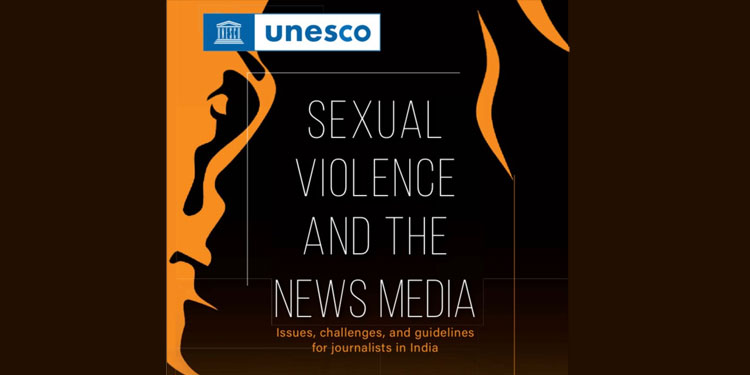The report titled ‘Sexual Violence and the News Media Issues, challenges, and guidelines for journalists in India’ presents the findings of a multilingual national study on the news reporting of sexual violence in India. Drawing on a content analysis of 10 newspapers covering six languages and semi-structured interviews with 257 journalists working across 14 languages, it provides comparative insights into the routines journalists follow and their challenges when they cover sexual violence.
The report evidences how news outlets tend to disproportionately publish unusual cases, such as those involving extreme brutality; focus on rape in urban areas, and rely heavily on police sources. Journalists rarely undertake in-depth inquiries into the cases they cover. The challenges they face include safety issues while newsgathering, difficulties in accessing key references, and distress from the requirements of their assignments.
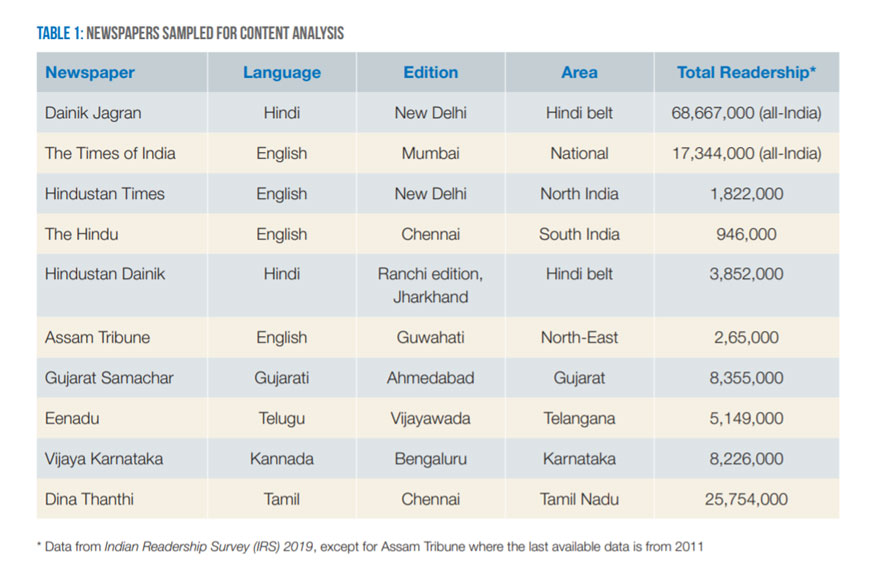
Overall, Nearly 20% of the respondents experienced psychological challenges while reporting on sexual violence. 55% of women journalists said they had directly experienced or witnessed workplace sexual harassment or violence, typically perpetrated by someone who wielded power through seniority or a supervisory role.
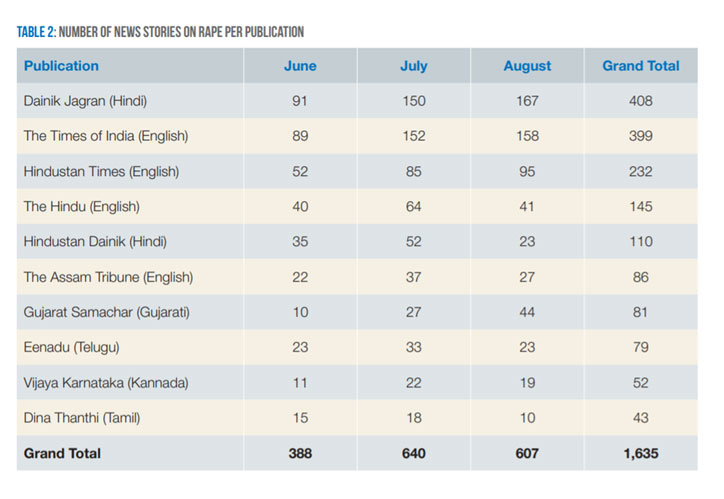
Key Findings
- News outlets tend to disproportionately publish unusual cases, such as those involving extreme brutality or attacks by strangers, thus presenting a misleading picture of how sexual violence usually manifests in India.
- The key deciding factor that governed journalists’ decision on covering a sexual violence incident is the ‘profile’ of the victim or perpetrator (according to 20.6% of respondents). Law-and-order responses is the second-most critical factor (16.7%), followed by the ‘gravity of the crime (14%).
- Newspapers were typically concerned with rape in urban areas (49%); only 22% were about rural locations.
- The majority of news reporting on rape and sexual violence was made up of ‘spot’ news stories, focusing on the attack details and lacking in context.
- While overt victim-blaming was evident in only 2.2% of cases, very rarely was there an attempt to provide a voice, direct or otherwise, for the victim.
- Only 19.5% of respondents said they used the term ‘rape’ in their news reporting. Most (51%) tended to use euphemisms instead.
- The majority of journalists (78%) said they felt responsible for effecting change in relation to sexual violence. Despite this, very few stories, just below 7%, focused on solutions.
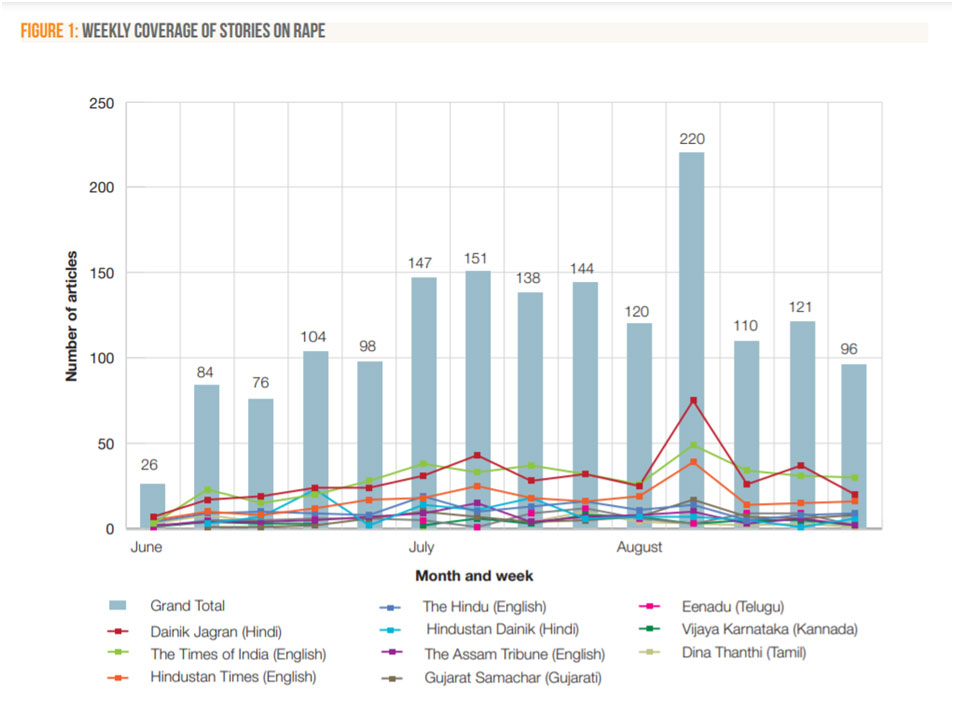
Patter in Daily News – Key Findings
- 8.4% of stories about rape and sexual violence make the frontpage
- The Hindu and Hindustan Dainik stand out: 2/10 of their rape-related stories were carried on the front page.
- Dainik Jagran published the highest number of stories, but only 3.9% were placed on the first page.
- Vernacular newspapers published a low number of stories on the front page, ranging from just below 4% to just above 8% (Gujarati, Telugu, Kannada, Tamil, and English in Assam).
Gang rape accounted for over 20% of news reports overall and was the largest single category of sexual violence covered in the volume of reports. However, it was the highest crime type in only three––Dainik Jagran, Hindustan Times, and Vijaya Karnataka–– out of the ten newspapers the survey team analyzed, indicating a significant variance across the different languages in terms of prominence Gujarat Samachar stands out with 28.2% of its rape-related news referring to ‘age-related (statutory) rape’. Newspapers were typically concerned with rape in urban areas • Overall, 49% were urban, 22% rural (rest were overseas or unclear from the report) • An exception was Hindustan Dainik (Hindi) 53.6% rural.
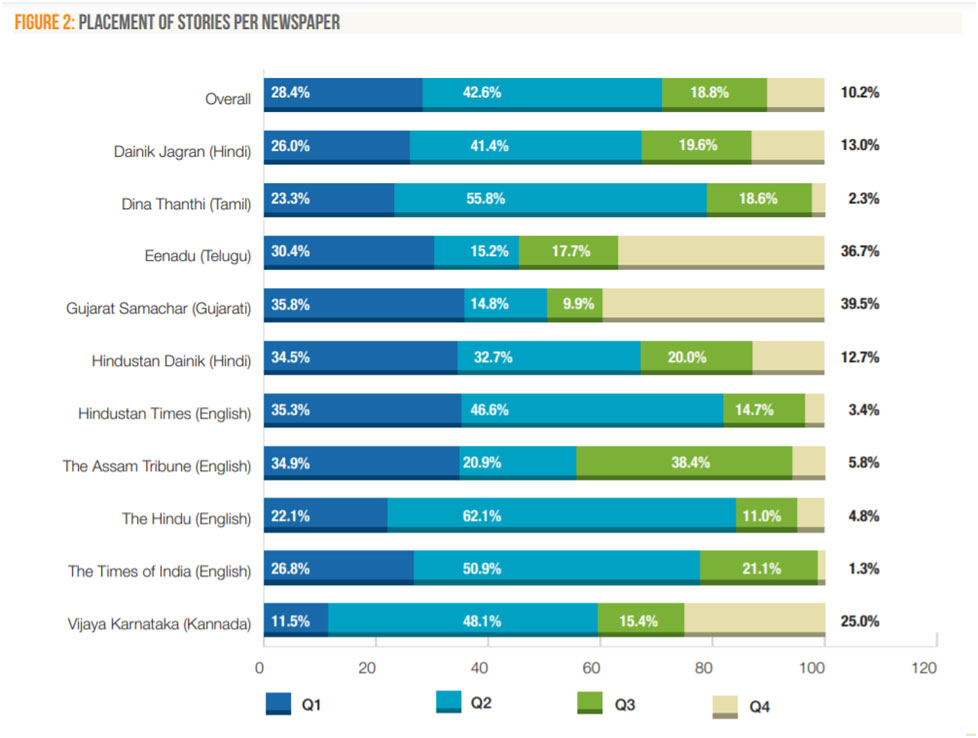
The majority of reports focus on the details of the attack. Overt victim-blaming in only 2.2% of reports Caste or religious conflict were mentioned in only 2% Political factors in 7.3%, but very high in Dainik Jagran (Hindi) at 22.3%. Just over 9% of reports frame sexual violence as a social issue. Very few stories focus on solutions (6.67%), and when they do, it is on the death penalty.
The ‘profile’ of the victim or perpetrator was a deciding factor in the coverage of a case, according to 20.6% of respondents. Another deciding factor that respondents spoke of was the ‘gravity of the crime. As a print journalist from Kerala summarised, “brutality is the benchmark” for reporting sexual violence.
A range of reasons was given for why filed reports were dropped, from space constraints to sensitivity of the subject, to consideration for the victim, to deeming the case as not ‘high-profile le’ enough. Story pitches were rejected for many reasons, from a general aversion to publishing reports on sexual violence to editorial concerns about evidence to back proposed stories.
The rationale given for underplaying rape stories was either external pressures, political factors, or the stance (as described in the section on self-censorship) that society needed to be spared further grief, caused mainly by cases of familial rape.

